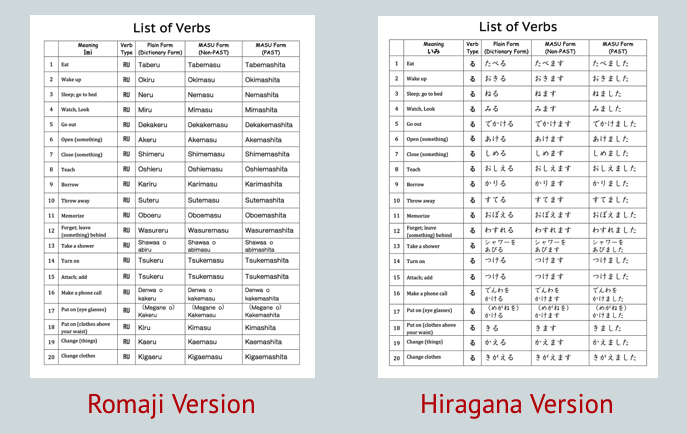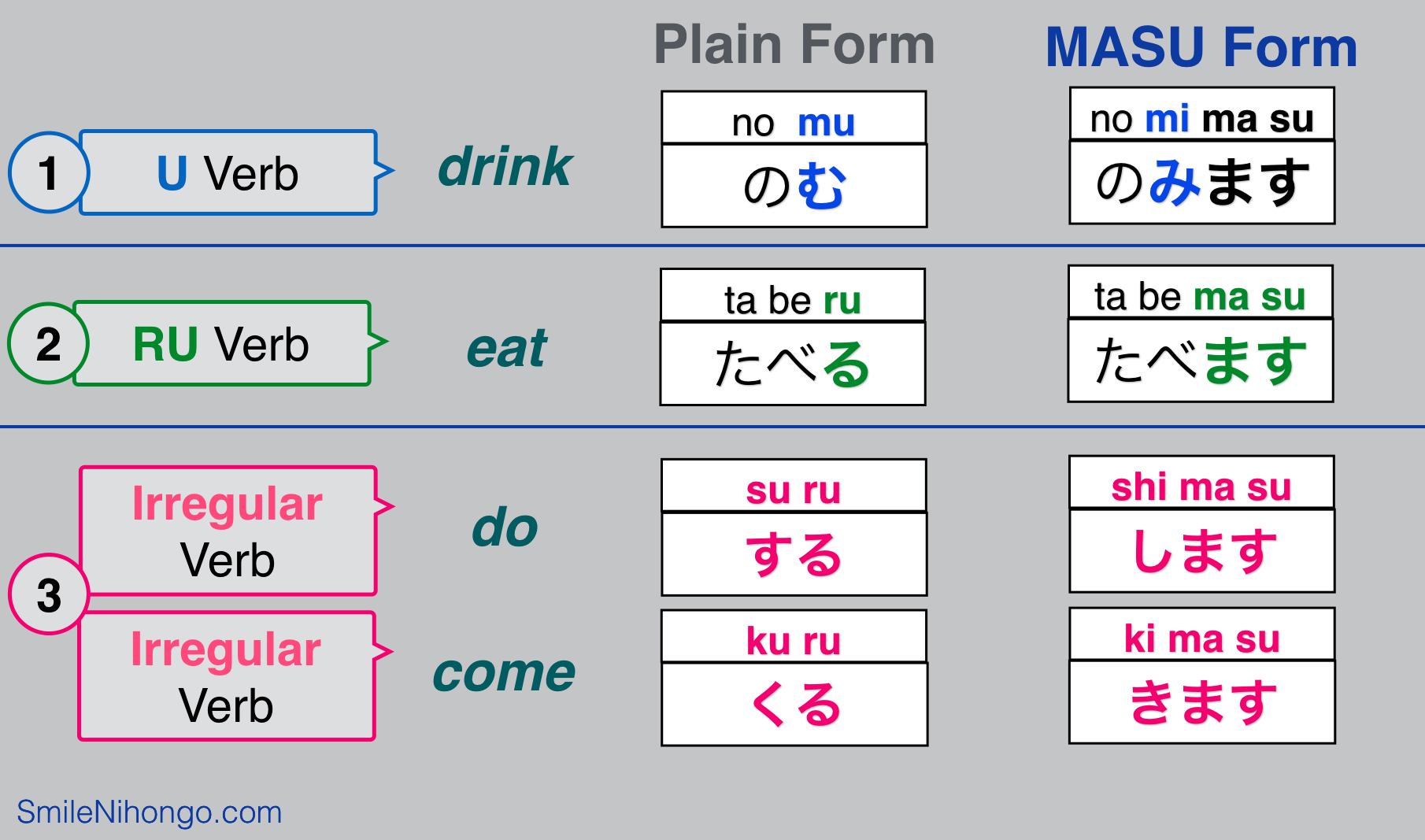Japanese Verb Conjugation Chart
Japanese Verb Conjugation Chart. If we separate べ into its consonant /b/ and vowel /e/, you can see that the final sound in the root is the vowel, /e/. This is why sometimes ru-verbs are also known as iru-verbs and eru-verbs.

Jump to: Japanese verbs related to mental situations and emotions ; The Japanese verb conjugation chart to END conjugation charts!
Japanese verbs, like the verbs of many other languages, can be phonetically modified to change their purpose, nuance or meaning - a process known as conjugation.
Japanese verbs are categorized into u-verbs and ru-verbs. If you want to conjugate a. Just like with the Godan verbs, a negative can be made by adding -nai (ex. tabenai - I will not eat.) and this base, or root form, is also used for the formal form of the verb.
Rating: 100% based on 788 ratings. 5 user reviews.
Veronica Cain
Thank you for reading this blog. If you have any query or suggestion please free leave a comment below.







0 Response to "Japanese Verb Conjugation Chart"
Post a Comment